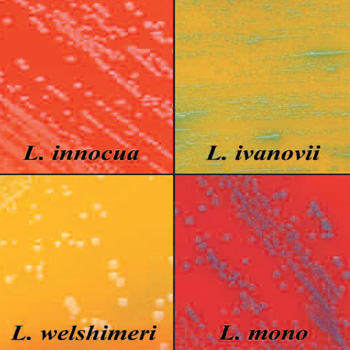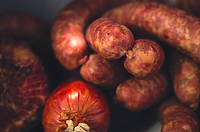Combination Meat Processing Plant Doesn’t Duck Listeria Testing

When ready-to-eat meat (RTE) products are processed in the same facility as raw meats, frequent, reliable Listeria testing is a vital part of a food safety program. Listeria is a problem that never goes away because the organism can lay dormant and survive in drains and in soil for months, waiting for the right conditions to thrive.
“In a plant where ready-to-eat and raw foods are handled, Listeria is always a concern,” says the biotechnology center supervisor at a busy duck and chicken processing plant based in the Midwest. “You have to be more vigilant.”
Even though the plant fully separates its ready-to-eat duck and other poultry product processing from its raw poultry processing areas, and it redesigned the drains throughout the facility to avoid backflow issues from raw to RTE areas, which can lead to Listeria growth, she says, frequent Listeria testing is still a top priority for the company.
The quality assurance team at the plant conducts Listeria testing on four to five duck samples each day of processing, six days a week, as well as taking 12 to 15 environmental sponge samples each day for Listeria testing to ensure that no Listeria is present in the food or in the plant environment.
Bio-Rad Test is Faster and More Effective
Unlike Rapid’L.Mono, traditional testing methods for Listeria take four days for test confirmation and the results can be less than crystal clear. PALCAM media, for example, requires 48 hours for pre-enrichment, and microorganisms other than Listeria, such as staphylococci or enterococci, may grow. The time spent waiting for test results and deciphering what they mean delays product ship dates, diminishing product shelf life, adding to overall manufacturing costs.
Rapid’L.Mono returns results in half the time it takes traditional cultures but still gives the microbiologist the opportunity and confidence of seeing the colonies on the plate. The results are also easier to read and interpret because the Bio-Rad test color codes its colonies—Listeria monocytogenes produces blue colonies without yellow halo whereas Listeria ivanovii produces greenish-blue colonies with yellow halo and other Listeria spp. colonies are white. This distinctive color coding process means that even as the culture is developing on the plate, the food company can see exactly what species is present, eliminating the risk of misinterpreting test results.
The ability to differentiate the target organism so clearly is where chromogenic media really shines, notes Brad Crutchfield, Vice President, Life Sciences with Bio-Rad Laboratories. “A potentially contaminated food sample typically does not contain a large number of cells leading to the possibility that the few Listeria monocytogenes colonies in a sea of non-pathogenic Listeria innocua may be missed with standard culture methods. With Rapid’L.Mono, these colonies stand out, providing a presumptive result for Listeria monocytogenes.”
“We love Rapid’L.Mono because it’s fast, inexpensive and unbelievably sensitive,” agrees the biotechnology center supervisor at the duck processing facility. Her team implemented the Bio-Rad test 18 months ago, replacing its other Listeria monitoring tools after a thorough test comparison process. Previously, the facility had used another vendor’s test in combination with the Listeria test from the United States Department of Agriculture (USDA).
When the plant first considered using the Bio-Rad test, it ran all three tests simultaneously for several weeks to verify the accuracy of Rapid’L.Mono.
Eventually, the quality assurance team dropped the other two tests, notes the supervisor. “They were unnecessarily redundant,” she says. In fact, the comparison testing process showed that Rapid’L.Mono picked up Listeria that the other tests missed. “If we have any Listeria it will grow with this test. You couldn’t possibly miss it.”
The processing facility is happy with the test’s ultra-sensitivity and the fact that if any Listeria monocytogenes is found, it is instantly identifiable when those colonies turn bright blue. In other tests, colony growth may appear dark or cloudy with no clear visual indicator of which ones are Listeria monocytogenes. “Now, we can eliminate the possibility of Listeria monocytogenes right away, which we love,” she says. “We’ve never been able to do that before.”
Once the 24-hour pre-enrichment is complete, the full results for Rapid’L.Mono are available in 48 hours—half the time it took to get results from the USDA test—which means the plant can get product out of the door faster. “We hold everything until we get our Listeria test results back,” she says. “This test bought us two more days of shelf life. Our sales guys love that.”
www.bio-rad.com
Looking for a reprint of this article?
From high-res PDFs to custom plaques, order your copy today!








